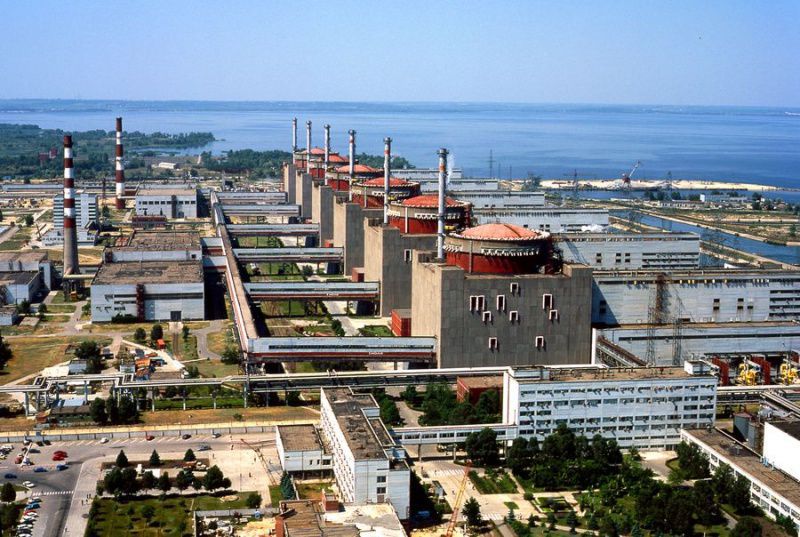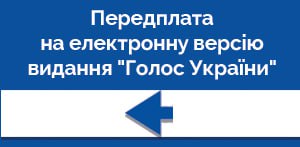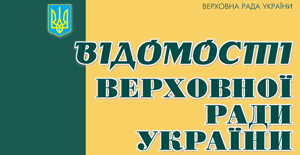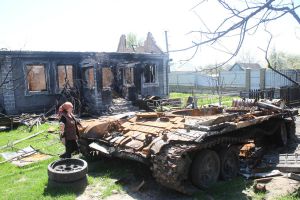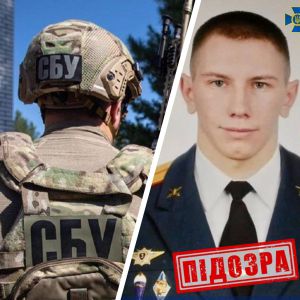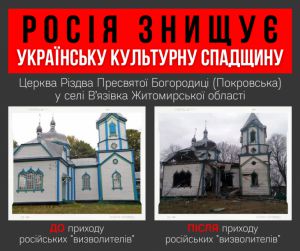On February 24, the first day of large-scale war that Putin started against Ukraine, Russian forces captured Chornobyl nuclear power station (NPP). On March 1, at about 1.55 a.m, fire started at Zaporizhya NPP after the adjusted attack of Russian troops. The occupants took this nuclear facility under control, too. Only one of six power units is currently working there. The Russian army tried to attack Mykolaiv and move towards Pivdennoukrainska NPP with the attempt to capture it. Oleksiy Arestovych, the counselor to the head of Office of President of Ukraine reported that at a briefing.
It’s already clear that the captivity of Chornobyl and Zaporizhya NPPs is not a random firing line for occupants and terrorist groups of Putinists in Ukraine. They knew where and why they were going. They were on their way to destroy the civilian facility, the destruction of which posed a threat to at least European security. When Ukraine demanded that the international partners close the sky, immediately after Russians captured the second NPP, NATO rejected Kyiv’s request. Jens Stoltenberg, the NATO Secretary-General explained that this «painful decision» was made so as not to allow the full-scale wr in Europe…
In spite of the obvious nuclear blackmail from Moscow, Kyiv still insists on closing the skies, asking the international partners and allies to do so in the opposition against the dictatorship of Putin. The hijack of NPPs is a well-planned operation. It’s not a coincidence that the task was delegated to Kadyrov’s bandits because they don’t ask too many questions (remember the story when they captured Chornobyl NPP, and their detachments raced across the Red Forest, which is a forbidden territory due to the increased radiation level). The war that Putin called an operation to demilitarize and de-nazify Ukraine did not go according to his plan. Russians learned about numerous losses of their forces in Ukraine, and already felt the imposed sanctions. The collective West sided with Ukraine. And the Kremlin propagandists urgently offered their new explanation of Russian Armed Forces’ invasion on the territory of «brotherly state». Russia’s several news agencies cited the «informed source in a competent Russian authority» claimed that since the signature of Budapest memorandum in 1994, Ukraine has allegedly worked on creation of its own nuclear weaponry. Since the beginning of Ukraine-Russia war in 2014, the work in this direction has allegedly activated. According to the fake legend of the Russians, scientists from Kharkiv physical and technical institute were involved in these works (the Russians have been bombing Kharkiv for several consecutive days), and the documentation was either kept in scientific centers in Kyiv, Kharkiv and at Zaporizhya NPP (which is now captured), or moved to Lviv Polytechnical Institute (maybe it’s the next air raid target?). The exclusion zone of Chornobyl NPP served as the basis for development of nuclear weapons (which is why it was captured, too). So, the Kremlin used this fake to justify the attack on Ukraine, specifically the captivity and bombardments of civilian infrastructure objects and captivity of Zaporizhya and Chornobyl NPPs.
In his commentary for Holos Ukrainy, Valeriy Korol, the expert in communication security said the following: «It’s possible that the captivity of NPP is a know-how, the Kremlin’s plan B to re-gain the initiative, if the invasion will have to be stopped. This could be Putin’s security line in a critical situation for him, if he needs to withdraw from the war in Ukraine, and it could happen thanks to the coordinated efforts of our partners. This is why the bilateral agreements could end up in direct blackmail of destruction of Zaporizhya NPP and terror act on Chornobyl NPP. One must not forget that Pivdennoukrainska NPP could also end up in the area of potential danger». The matter of security of NPPs in Ukraine is far beyond this country, and it needs to be addressed by the entire civilization. These answers become the basis of the structure of the future global security system that the leading countries have been working on since 2014. There’s no time to spare. One needs to urgently create international infrastructure services that would address the issues of NPP safety in the online mode, being managed from the united coordinated centre for immediate response.


